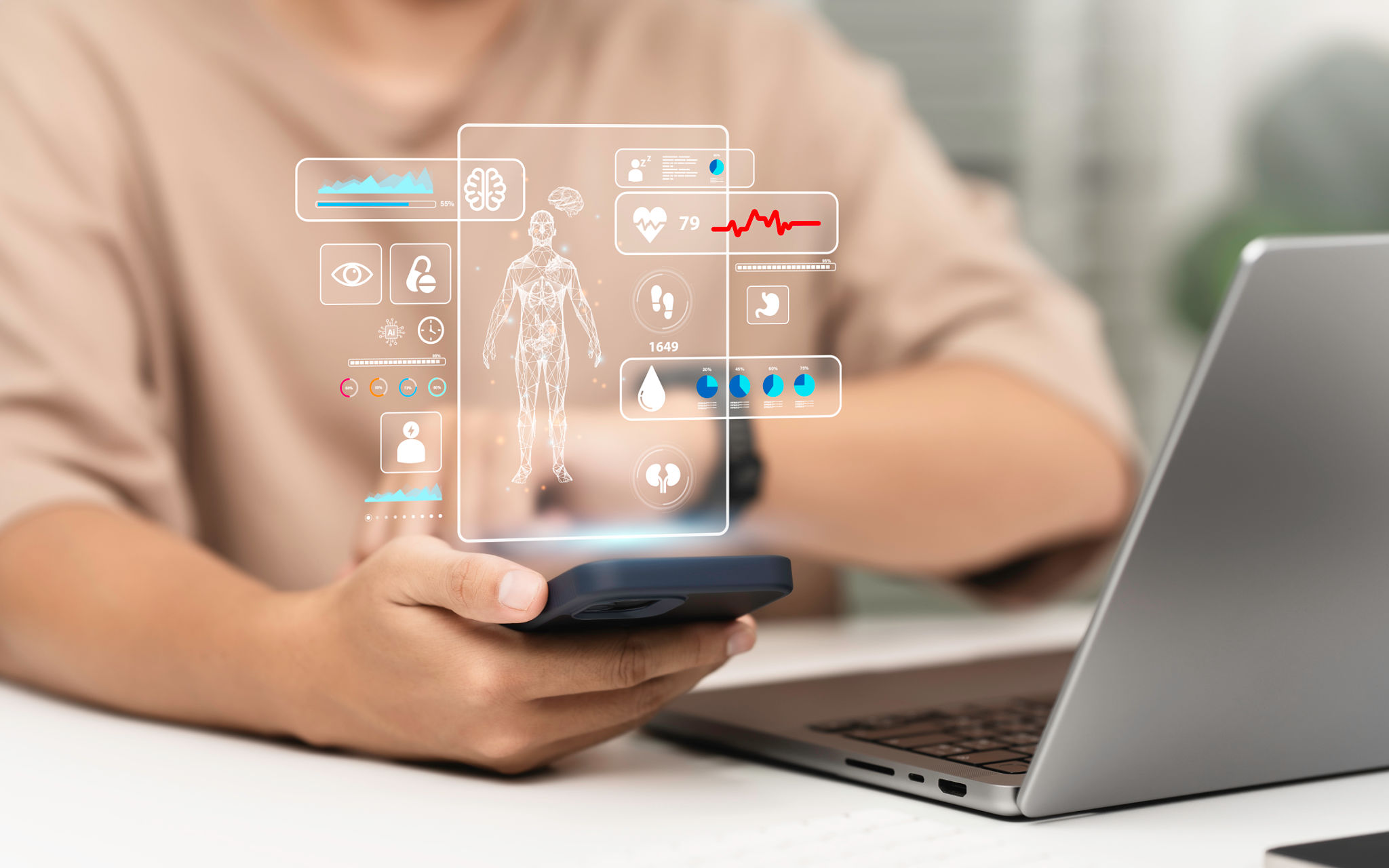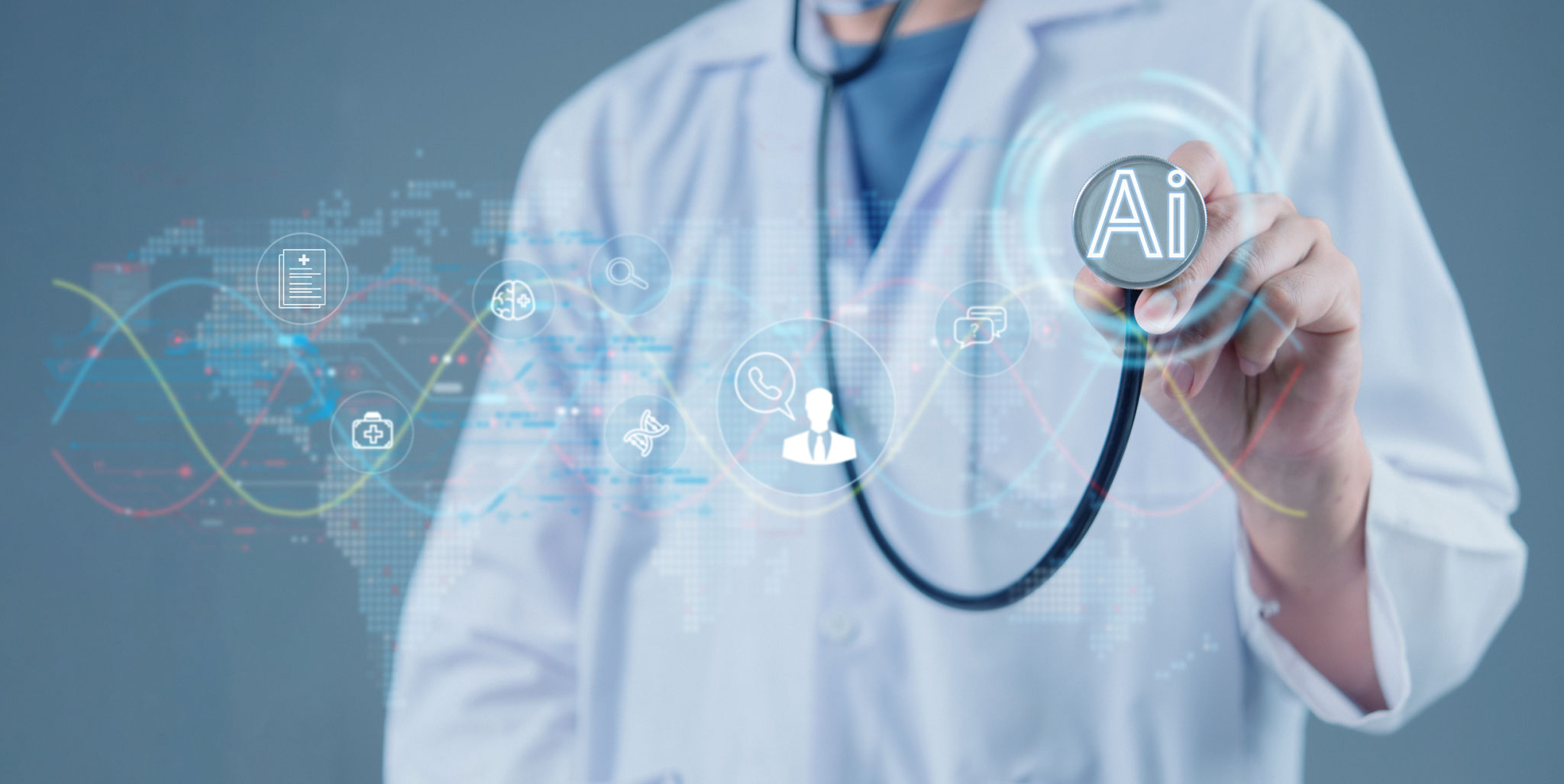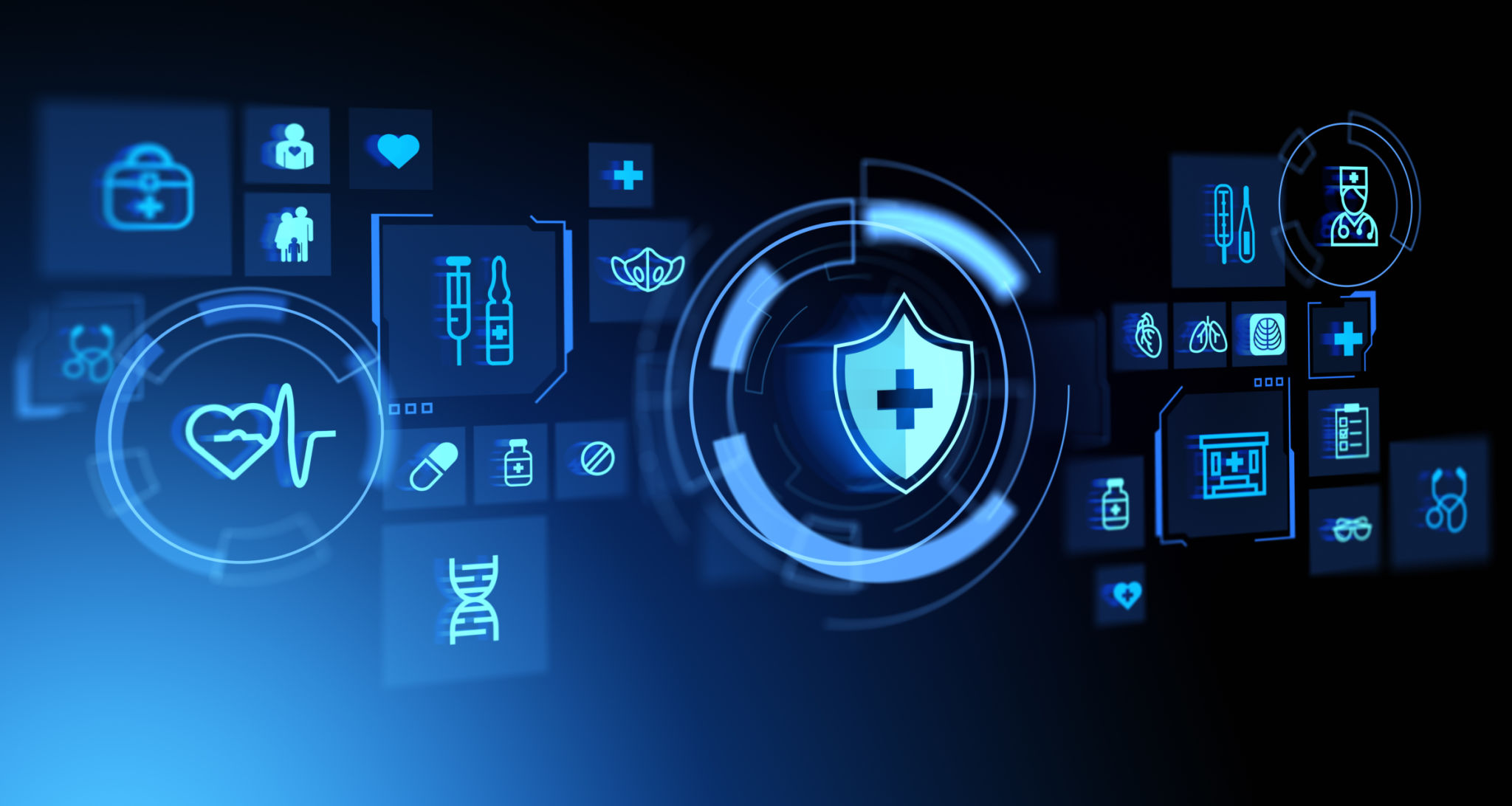Innovation in Digital Health
JH
Digital technology is revolutionizing healthcare, leading to a wave of innovation in digital health. From virtual doctor visits to AI-assisted diagnostics and wearable health trackers, these innovations are making healthcare more accessible, efficient, and personalized than ever before. The COVID-19 pandemic accelerated many of these trends – for instance, telemedicine usage surged dramatically during 2020 and has since become a staple of care delivery. In 2021 alone, over 37% of U.S. adults had used telemedicine services in the past year (a huge increase from pre-pandemic levels) according to CDC data. Major investments are flowing into digital health as well; a Stanford study noted that AI in healthcare attracted nearly $29 billion of investment between 2017 and 2021, signaling strong confidence in technology’s potential to improve health outcomes. Healthcare leaders are taking note – nearly 90% of health system executives worldwide expect digital tools and virtual health to be central to their strategies in the coming years. In this blog, we’ll explore key areas of innovation in digital health – including telemedicine, wearable devices, data analytics and AI, and patient-centric platforms – and how they are transforming healthcare.

The Rise of Telemedicine and Virtual Care
A patient at home uses a telehealth platform to consult with a doctor remotely, illustrating the convenience of virtual care. Telemedicine – the remote delivery of healthcare via video or phone – has moved from novelty to normalcy. What started as a necessity during pandemic lockdowns has now become an expected option for routine care. Virtual doctor visits enable patients to connect with physicians from the comfort of home, eliminating travel barriers and reducing wait times. This is especially impactful for individuals in rural or underserved areas, who can now access specialists hundreds of miles away. The benefits are clear: improved access, convenience, and reduced risk of infectious exposure. In fact, telehealth was vital during COVID-19 surges to maintain continuity of care while keeping vulnerable patients safe.
Healthcare providers have rapidly expanded their virtual care offerings, and patients have grown more comfortable with remote consultations for non-emergency needs. By 2021, more than one in three U.S. adults had used telemedicine within the prior year (versus only single-digit percentages before 2020) – a testament to how quickly this innovation has been adopted. Telemedicine is being used for primary care check-ups, mental health therapy sessions, follow-up visits for chronic conditions, and much more. Beyond live video calls, virtual care now spans remote patient monitoring programs (using devices that transmit health data like blood pressure or glucose levels to clinicians) and even “hospital-at-home” models for certain acute conditions. Health systems are integrating telehealth into their long-term plans; surveys by Deloitte indicate that almost 90% of healthcare executives expect virtual health and connected care to play a major role in their strategic roadmap. While challenges like reimbursement policies and technology access for some patients remain, the trajectory is clear: telemedicine has firmly established itself as a core component of modern healthcare delivery, improving accessibility and convenience on a broad scale.
Wearables and the Internet of Medical Things (IoMT)
Smartwatches and wearable health devices are part of the “Internet of Medical Things,” continuously collecting data like heart rate and activity to help individuals and clinicians monitor health in real time. Another exciting area of digital health innovation is the explosion of wearable health devices and connected sensors – sometimes called the Internet of Medical Things. These include familiar consumer gadgets like fitness bands and smartwatches (e.g. Apple Watch, Fitbit) as well as specialized medical wearables like continuous glucose monitors, ECG patches, digital blood pressure cuffs, and more. What they share is the ability to continuously collect valuable physiological data from users as they go about daily life. For instance, today’s wearable devices can track heart rate, sleep patterns, steps and exercise, ECG signals (to detect arrhythmias), blood oxygen saturation, and even early signs of illness like changes in skin temperature or pulse that might indicate a fever. All of this data can be synced to smartphone apps or cloud platforms, giving people and their healthcare providers real-time insights into health trends.
This constant stream of data is transforming care from a reactive, episodic approach to a more proactive and preventive one. Instead of relying only on an annual checkup or waiting until symptoms become severe, wearables allow for continuous health monitoring. A smartwatch might alert its wearer of an unusually high heart rate or irregular rhythm, prompting a timely medical evaluation that could catch a condition like atrial fibrillation early. Fitness trackers motivate users to stay active and can even share activity data with doctors or wellness programs. Importantly, these devices empower patients to engage more in their own health – many people report that seeing daily metrics (like steps walked or sleep quality) encourages healthier habits and adherence to treatment plans. On the clinical side, doctors can use wearable data to manage chronic diseases (for example, tracking a heart failure patient’s weight and vitals to prevent hospitalizations) or to monitor recovery after surgeries. The industry is responding to the promise of wearables: hundreds of millions of wearable health devices have been sold globally, and the sector continues to grow rapidly. Analysts project the market for medical wearables to expand dramatically in the coming years, as new sensors and AI algorithms enable even more sophisticated health tracking. IoMT devices, integrated with healthcare IT systems, pave the way for smarter, data-driven care – allowing early interventions that improve outcomes and reduce costs.

AI and Big Data Driving Healthcare Insights
Advanced technologies like artificial intelligence (AI) are increasingly used in healthcare – for example, to analyze large datasets and assist in diagnosing conditions – as symbolized by this digital illustration of a stethoscope connected to global data networks. The rise of artificial intelligence (AI) and big data analytics is another cornerstone of innovation in digital health. Modern healthcare generates an immense amount of data – from electronic health records, medical imaging, lab results, to the continuous streams of data from wearables and remote monitors. AI algorithms are uniquely suited to sift through these vast datasets and detect patterns or make predictions that humans alone might miss. In clinical practice, AI is already being used to assist in diagnostics: for example, machine learning models can analyze medical images (X-rays, CT scans, MRIs) to help radiologists spot early signs of diseases like cancers or lung conditions with remarkable accuracy. AI-driven tools can flag potential abnormalities or prioritize critical cases, expediting care. In pathology, AI systems scan microscope slides for cellular changes; in ophthalmology, they help detect diabetic retinopathy from eye images. These tools augment healthcare professionals’ abilities, acting as a second set of eyes and reducing diagnostic errors.
Big data analytics combined with AI is also enabling predictive healthcare. By examining patterns in patient data, algorithms can help predict who is at risk for developing conditions like diabetes or heart disease, allowing for preventive measures. Hospitals use AI forecasting to predict patient admissions and optimize staffing, or to identify patients at high risk of complications so that care teams can intervene early. During the COVID-19 pandemic, AI models analyzed public health data to forecast outbreak hotspots and assist in resource allocation. The investment and interest in healthcare AI are at an all-time high – billions of dollars are pouring into digital health AI startups, and even regulators are embracing this trend. In January 2024, the FDA approved its first AI-powered clinical tool for mental health: an app using machine learning to evaluate anxiety and depression severity, which opens the door for more AI-driven solutions in patient care.
Of course, harnessing big data in healthcare also raises challenges around data privacy, security, and the need for high-quality, unbiased datasets to train AI models. But when implemented responsibly, AI has shown it can improve efficiency (for instance, automating routine documentation or triaging patient messages) and even discover new insights (such as analyzing genomics or biomedical research data to find novel drug targets). It’s telling that AI in digital health received more investment than any other AI sector in recent years – a clear indication that stakeholders believe in its transformative potential. From helping clinicians make more accurate diagnoses to personalizing treatment recommendations, AI and data analytics are empowering a smarter, more precise healthcare system.
Preventive Care and Patient Empowerment through Digital Platforms
One of the most powerful promises of digital health innovation is the shift toward preventive, personalized care – keeping people healthier so they need less intensive medical intervention down the line. A great example is the work of companies like Xcellent Life, an innovative digital health & wellness platform. Xcellent Life’s approach centers on real-time health analytics and proactive wellness coaching, rather than waiting for patients to fall ill. Their platform aggregates data from wearables, health apps, and even user inputs (like symptoms or lifestyle factors), and analyzes it using proprietary Real-Time Human Diagnostics (RtHD) technology. This allows them to give users personalized health insights and early warnings about potential issues. In essence, Xcellent Life acts like an “OnStar for the human body” – continuously monitoring key signals and alerting you to tune up your health habits or seek care before a crisis happens. By leveraging AI-driven analytics, the platform can identify subtle changes in a person’s metrics that might indicate rising stress, an impending illness, or a risk factor for chronic disease, and then recommend tailored actions to improve or avert problems.
Equally important is how Xcellent Life and similar platforms engage and motivate individuals to care for their well-being. Xcellent Life has pioneered gamification of wellness – for instance, through its “Wellness-as-a-Currency” model, users earn rewards (even monetary prizes in challenges) for improving their health metrics and completing healthy activities. This innovative incentive system has been effective in driving lasting behavior change, addressing one of the toughest challenges in public health: how to get people to maintain healthy lifestyles. By making wellness fun, social, and rewarding, digital health programs can increase adherence to exercise, proper nutrition, medication, and preventive screenings. The impact of such preventive-focused innovation is potentially enormous. Each year, tens of millions of people worldwide die from conditions that are preventable with the right early interventions. By focusing on lifestyle, early detection, and consistent monitoring, these digital tools aim to reduce that toll and also cut healthcare costs associated with advanced diseases.
There’s evidence that this strategy can work. A study by the IQVIA Institute for Human Data Science found that using health apps and wearables for preventive care could save the U.S. healthcare system an estimated $7 billion per year by avoiding hospital visits and procedures. In other words, keeping people healthier not only improves lives but also relieves strain on healthcare resources. Xcellent Life’s own mission statement highlights this synergy: improving quality of life for individuals while lowering medical costs for whole populations. Employers and insurers are also embracing digital wellness platforms to help their members live healthier – from remote coaching for chronic disease management to mental health apps that provide coping tools. Patient empowerment is the common thread in these innovations. By giving people user-friendly tech tools to understand and improve their health, digital health is transforming patients from passive recipients of care into active, informed partners in their wellbeing. This cultural shift – enabled by technology – may prove as impactful as any new drug or therapy in the long run, building a healthcare system centered on maintaining health rather than just treating illness.
The Road Ahead for Digital Health Innovation
Digital health has already made impressive strides, but we are likely just at the beginning of this innovation journey. In the coming years, we can expect even deeper integration of technology into every facet of healthcare. Data interoperability and health information exchange will improve, allowing a seamless flow of patient data between wearables, clinics, hospitals, and personal health records – making care more coordinated. Advances in AI will continue at a rapid clip: we might see AI assistants helping doctors by recording and summarizing patient visits, or more FDA-approved AI diagnostics for a range of conditions. Emerging technologies like virtual reality (VR) and augmented reality (AR) also hold promise in healthcare – VR is already being used for pain management therapy and medical training simulations, and this is likely to expand. For example, VR programs can help rehabilitate stroke patients through engaging virtual exercises, or support mental health by providing immersive meditation and stress relief environments. The global digital health market is booming, with estimates that it will reach hundreds of billions (even trillions) of dollars within the next decade, reflecting the scale of change underway.
Crucially, the digital health revolution is bringing in a range of new players and partnerships. Tech giants and startups alike are collaborating with healthcare providers, research institutions, and government agencies to pilot innovative solutions. Public health authorities are also leveraging digital tools for population health surveillance and education (for instance, using mobile apps for contact tracing or to disseminate vaccine information). As these technologies mature, regulators and policymakers will adapt frameworks to ensure safety, effectiveness, and equitable access – for instance, setting standards for telehealth services or addressing privacy concerns with health data. Patients’ attitudes have shifted too: people are increasingly willing to use apps or remote services if it means more convenient and personalized care. Xcellent Life and its peers exemplify how a tech-driven approach can resonate with consumers by focusing on user experience (their platform is noted for being user-friendly for all ages) and tangible benefits (like feeling better and being rewarded for healthy behavior).
In conclusion, innovation in digital health is transforming how we prevent, diagnose, and treat disease – ultimately moving healthcare toward a model that is more proactive, data-driven, and centered around the patient. Challenges remain, such as ensuring digital health equity (so that the elderly or those in low-resource settings are not left behind) and safeguarding sensitive health information. However, the momentum is undeniable. From a video call with your doctor, to an AI algorithm analyzing your lab tests, to a smartwatch nudging you to take an extra walk today – these advancements are converging to create a healthier future for all. Embracing these innovations, and continuing to improve them, will be key to unlocking better outcomes and truly excellent life quality across our communities.

Sources:
Xcellent Life Inc. – AI-Empowered Digital Health & Wellness Platform
https://xcellentlife.com/
Forbes – The Power (And Peril) Of AI In Digital Health
https://www.forbes.com/councils/forbestechcouncil/2024/03/08/the-power-and-peril-of-ai-in-digital-health/
Centers for Disease Control and Prevention – Telemedicine Use Among Adults: United States, 2021
https://www.cdc.gov/nchs/products/databriefs/db445.htm
IQVIA Institute – The Growing Value of Digital Health
https://www.iqvia.com/insights/the-iqvia-institute/reports-and-publications/reports/the-growing-value-of-digital-health
Deloitte Insights – 2025 Global Health Care Outlook
https://www.deloitte.com/us/en/insights/industry/health-care/life-sciences-and-health-care-industry-outlooks/2025-global-health-care-executive-outlook.html
